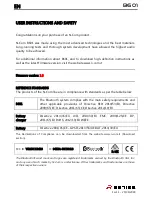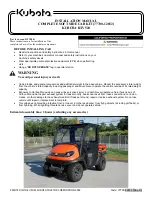
3 - 2
QuickCollect CMDT 391 / CMDT 391-Ex
User Manual
–
Revision B
Measurement Guidelines
Performing Vibration Measurements
Vibrations measurements are typically performed with the machine operating under
normal conditions. For example, when the machinery has reached its normal operating
temperature and is running under its normal rated condition (at rated voltage, flow,
pressure and load). For machines with varying speeds or loads, perform measurements
at all extreme rating conditions, as well as at selected conditions within these limits.
Pla e the se sor s ag et o
the
a hi e s easure e t poi t.
When placing the
sensor on the machine, generally avoid greasy, oily or wet surfaces, housing joints,
panels and non-structural parts. Select the best measurement point (specifically avoid
unloaded bearing zones) and be consistent in terms of sensor position, sensor
angle/alignment and contact pressure.
If possi le, hoose a flat surfa e i the eari g s load zo e. Measure e ts should e
taken at the same precise location (as moving the probe only a few inches can produce
drastically different vibration readings). To ensure measurements are taken repeatably,
mark the measurement point with a permanent marker.
Proper hand-held sensor technique is vital to the accuracy of measurements. It is critical
that consistent measurements are made.
When taking measurements using an external cable and sensor, care must be taken not
to move the cable during data collection.
Using the cable in conjunction with different external accelerometers may give different
readings due to the variation in the accelerometers used. Measurements will also vary
between the internal sensor and an external sensor. Be consistent by always using the
same sensor for a particular measurement point, i.e. internal sensor or same external
sensor.
Performing Infrared Temperature Measurements
To perform accurate non-contact infrared temperature measurements, bear in mind
infrared sensor cleanliness. The infrared sensor has a small opening. Dirt, grease or oil
may enter the opening and cause inaccurate temperature measurements. If necessary,
clean the opening using alcohol and cotton buds.
















































